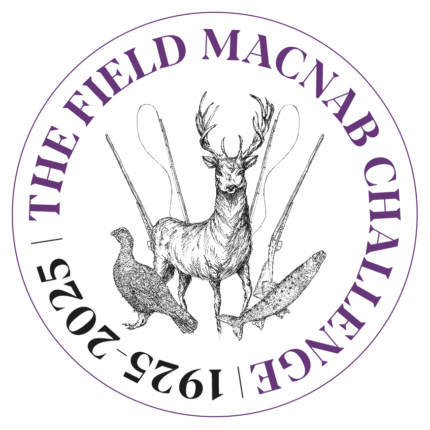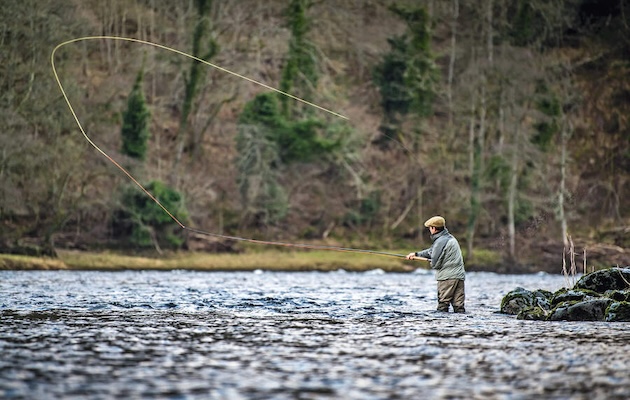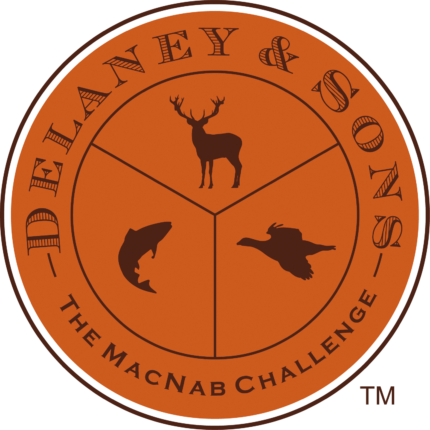The feat of catching a salmon, grassing a stag and shooting a brace of grouse all in one day is a triumph of conservation as much as sporting prowess. Are you ready to for the challenge?
The Field, in association with Westley Richards and Delaney & Sons, challenges you to bag a Macnab between 12 August and 10 November 2025
THE 2025 MACNAB CHALLENGE
Any sporting sort knows what a challenge it is to undertake a proper Macnab, by which we mean the modern classic iteration, inspired by John Buchan and tweaked for the modern sportsman in the pages of The Field. That is, to catch a salmon, shoot a stag and finish with a brace of grouse, all taken between dawn and dusk, in one day. It requires skill, planning, dedication and that most elusive sporting element: luck. We are delighted to launch The Field’s Macnab Challenge 2025 in association with Westley Richards and Delaney & Sons, a combination of partners who will not only fit you out with rifle, shotgun and the right kit, but can also whisk you north (or anywhere else, for that matter) in style.
 The Macnab is an undertaking that channels fieldsports, conservation and traditional and modern sporting techniques. It places the grouse, the red deer and the salmon on a pedestal, is concerned with their success and demands an understanding of their environment. The conservation efforts that gillies and gamekeepers undertake every day for the sake of these quarry species and their survival are a crucial part of the story.
The Macnab is an undertaking that channels fieldsports, conservation and traditional and modern sporting techniques. It places the grouse, the red deer and the salmon on a pedestal, is concerned with their success and demands an understanding of their environment. The conservation efforts that gillies and gamekeepers undertake every day for the sake of these quarry species and their survival are a crucial part of the story.

The Macnab Challenge is the ultimate test in fieldsports, and a sporting adventure you will never forget.
Red stag
Red deer numbers have increased considerably during the past century. Thanks to habitat changes and the absence of large carnivores in the UK, deer have been given an ideal situation to expand and multiply. However, as numbers grow, problems emerge. Deer density has reached a 1,000-year high. This has a significant impact on the environment, preventing the regeneration of woodland by overgrazing, thereby affecting its structure and tree species composition. This has knock-on effects for other woodland flora and fauna. The genetic purity of the species may also be threatened by hybridisation with the non-native sika deer. For this reason, most red deer populations are managed through a culling programme to control their spread. This sporting management is of the utmost importance to Charles Smith-Jones, technical adviser to the British Deer Society. “The sporting pursuit of red deer stags can be a positive element of any intelligent management plan for the species as a whole, but it is vital to avoid over-exploitation,” he says. “There are parts of the country where this is regrettably not the case and numbers of mature master stags can be detrimental, out of balance with the overall local population.”

The chance of a grouse
Red grouse
The red grouse is one of the most iconic British gamebirds, with an unforgettable raucous cackle and terrifying agility as it navigates its way, hugging the heather an inch off the ground, through undulating moorland. Conservation projects surrounding moorlands have been ongoing for decades with successful outcomes, as Andrew Gilruth, Chief Executive of the Moorland Association, explains. “For 150 years, it [driven grouse shooting] has best protected and maintained globally rare heather moorland. Grouse moor management supports over a dozen plant communities that are either only found in the UK, or are better developed here than elsewhere.” He adds a request to those venturing out to the moors this season that they “must remember to thank the moorland keeper teams for ensuring these wonderful places, so important they were ratified in the Rio Convention on Biodiversity, still exist at all”.
There have been setbacks and disappointments in the progress to maintain the habitat this bird depends on. Opponents of driven grouse shooting have made vast swathes of once-managed moorland into woodland, farmland or sometimes desolate ground. Ian Coghill, a former chairman of the GWCT and author of the book Moorland Matters, agrees. “Grouse moor management is not just good for the conservation of extraordinary landscapes and the rare species of plants, invertebrates and birds that those landscapes support, it is essential. Without moorland management for grouse, entire landscapes and the wildlife, culture and communities they support would simply disappear. This is not a matter of conjecture. It has already happened, in far too many places, and the results are tragic at every level.”
The red grouse is a unique bird in the sense that it is so specific in its habitat, lifestyle and general behaviour that if one thing is out of place, such as the weather, the situation becomes even more difficult. This makes estate management, in terms of conservation, particularly hard. But it seems that many estates are succeeding in their management of the moors in other areas benefiting the grouse if the weather conditions are kind. “In view of the constant sniping at the traditional model of estate management that underpins most Macnabs,” says Coghill, “it was pleasing to see that when the UK biodiversity index was published a few years ago, the Highlands beat every other part of the country into a cocked hat, being a couple of thousand species richer than its nearest rival. Obviously, not everyone was as pleased as I was and, equally obviously, the conservation industry doesn’t like to mention it in polite society.”

Atlantic salmon
Salmo salar has been the most hard hit in population out of the three species in recent times and often marks the toughest part of the Macnab challenge. Many factors have contributed to this, but groups and individuals have spent countless hours fighting to stem this seemingly constant decline. Nick Measham, chief executive of Salmon & Trout Conservation (S&TC), says: “There is sadly no silver bullet in Atlantic salmon conservation. The king of fish faces threats in each stage of its amazing life. Some of these threats on the open seas we can do little about other than stop fishing which, thanks to the North Atlantic Salmon Conservation Organisation, has been largely achieved.”
There are ways to help prevent the salmon population declining further. “It is in rivers and coastal waters where we can really make a difference,” Measham says. “S&TC is campaigning to end open-net salmon farming, which is probably the main threat to wild salmon wherever it takes place. Wild fish are killed by the sea lice and pollution from these farms. The wild salmon and sea trout in many rivers on the west coast of Scotland, the home of John Macnab’s fictional river, are being destroyed by salmon farming.” Supporting S&TC in this cause is something that is easily achievable by avoiding eating the farmed salmon that is readily available in the UK’s major supermarkets. However, other solutions are being sought by S&TC and other organisations. Maintaining the health of the rivers that salmon frequent and improving the habitat beneath the surface of the water is proving to help the salmon who have swum incredible distances and made it into freshwater. “Improving the freshwater habitat by working to prevent pollution from agriculture and sewage, and removing barriers to migration – in these ways, we can help stem the salmon’s decline,” Measham says.
With such large amounts of conservation work being carried out behind the scenes, it is hoped that these species continue to receive the help they deserve from those who understand them. With these sporting species in mind, we encourage you to take up the gauntlet and attempt The Field’s Macnab Challenge 2025.
Macnab menu
Real Macnab
A salmon on the fly and a stag, as the trio did in John Buchan’s John Macnab. They must be ‘poached’ in legal sporting manner from an owner
who accepts the challenge.
Classic Macnab
A stag, a salmon and a brace of grouse. The Classic Macnab epitomises the best of country sports in Scotland and is the sporting test behind The Field’s Macnab Challenge.
Southern Macnab
A couple of snipe, a sea trout and a roebuck.
Macmarsh
A foreshore goose, a pike and a fallow buck.
Macnorfolk
A bass on the fly, a brace of wild grey partridges and a fallow buck.
Macscandi
A moose, a capercaillie and a trout on the fly.
Macargentinian
A golden dorado, 100 brace of doves and a wild pig.
Macafrican
A brace of sandgrouse, an impala and a tigerfish.
Maccharlie
Riding to foxhounds, harriers and staghounds in a day.
Corinthian Macnab
Riding to hounds in the morning, shooting a brace of partridges in the afternoon and then catching a trout
on the fly in the evening.
All Macnabs must be completed between dawn and dusk, and within one day.
To enter email field.secretary@futurenet.com


This article was originally published in 2022 and has been updated.





